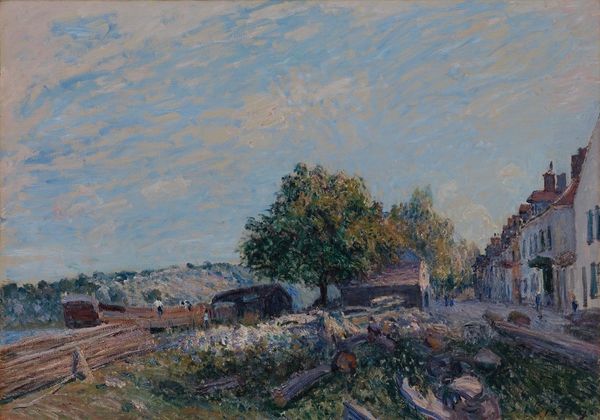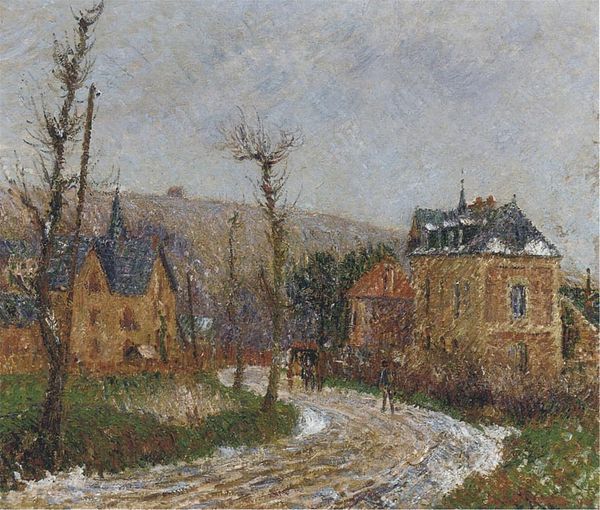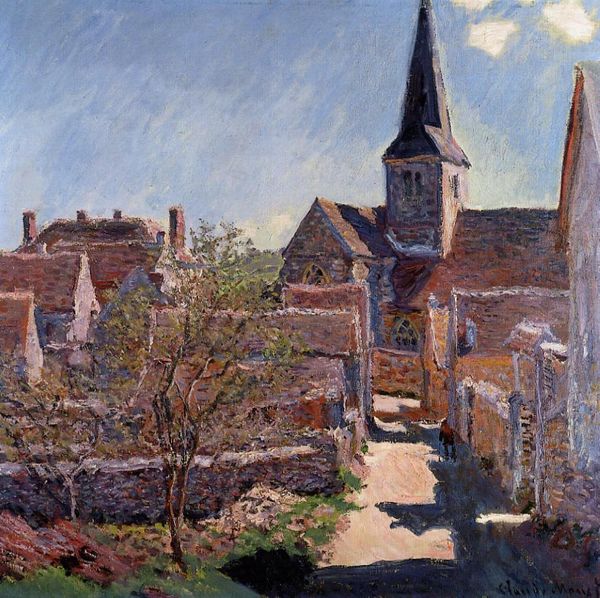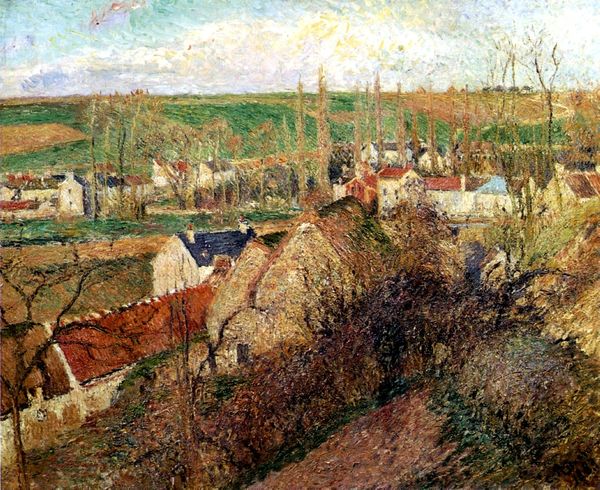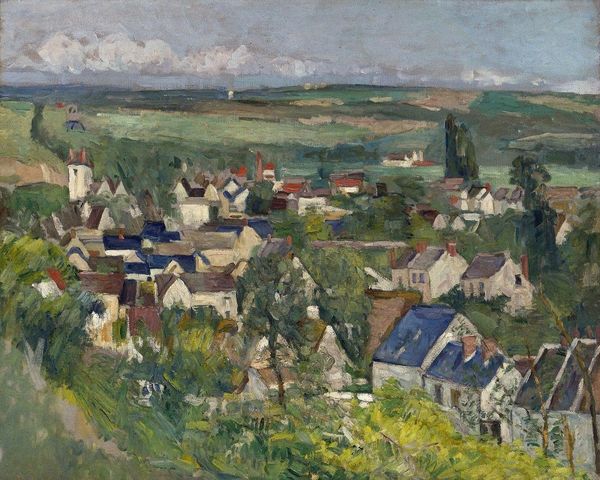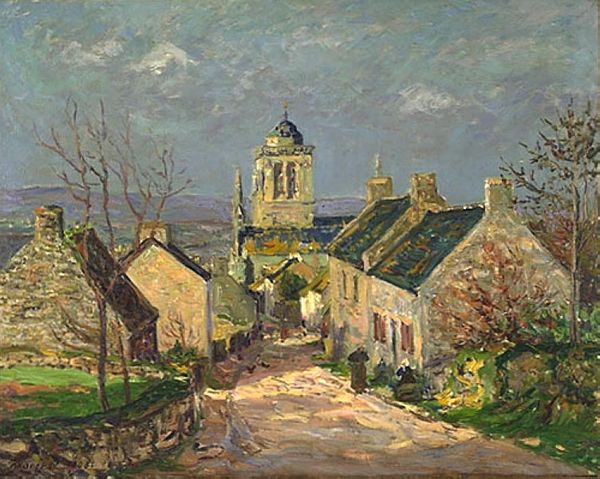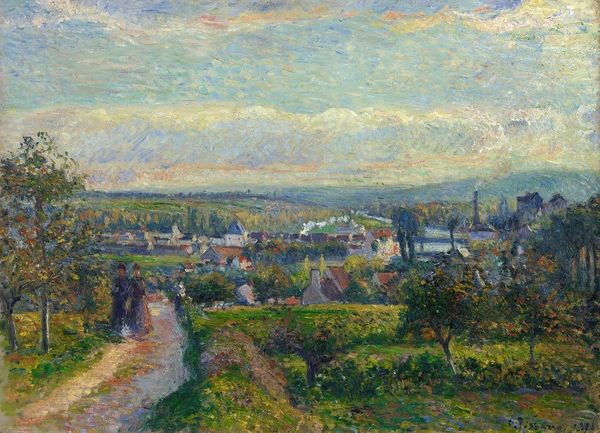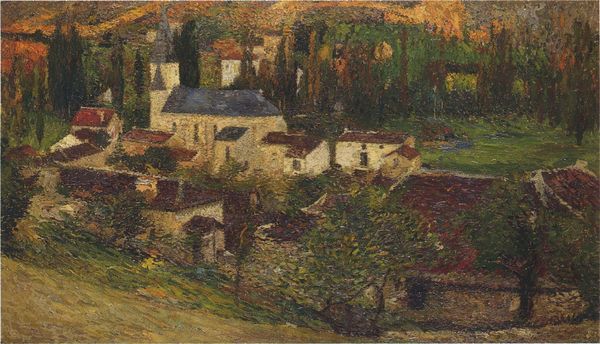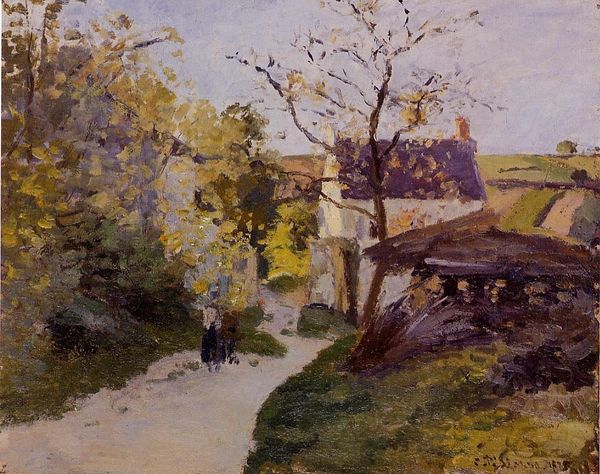
Copyright: Public domain
Editor: So, here we have Childe Hassam’s "Quincy, Massachusetts" from 1892, done with oil paints. It has this really quaint, almost dreamy feeling… What strikes you about it? Curator: It's tempting to just see a pretty scene, but let's think about the socio-political context of late 19th-century America. Industrialization was booming, cities were growing, and anxieties about losing a simpler, "purer" past were widespread. How might this idealized view of a small town play into that narrative? Editor: Oh, interesting. So, the charming cityscape might be less about the reality of Quincy, and more about longing for a certain kind of life? Curator: Precisely! Hassam's impressionistic style, focusing on light and surface rather than strict realism, also reinforces that sense of… nostalgia, shall we say. The church steeple dominating the skyline—what does that symbol represent in terms of community and social order? Think about power dynamics at the time. Who did this idyllic image serve? Editor: The church as a representation of social power, that’s a great point. I hadn’t considered that. Curator: And how might this image contrast with, or even erase, the experiences of marginalized communities who wouldn't have had a place in this "idyllic" vision? Consider immigration, industrial labor… Where are those stories in this picture? Editor: That’s powerful. It really shifts my understanding of the painting to think about what’s absent, not just what’s present. Curator: Exactly. It’s a beautiful work, but art always speaks within and to larger social forces. Looking beyond the surface helps us see more deeply. Editor: I'll definitely look at other landscapes with a different lens from now on. Curator: Me too, and questioning those “simple” or “beautiful” things gives them another perspective.
Comments
No comments
Be the first to comment and join the conversation on the ultimate creative platform.


